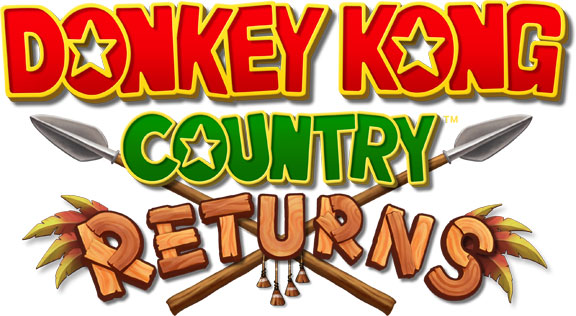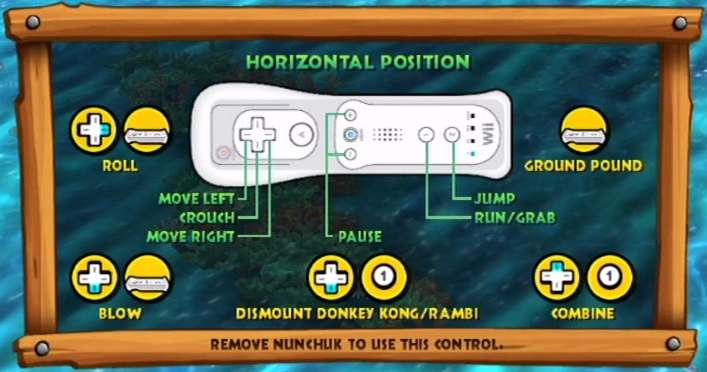Consider what I thought when I first witnessed the E3 announcement of Donkey Kong Country: Returns (DKCR). I have a long history with Donkey Kong. I exhausted DKC as a kid and even participated in a Blockbuster point based competition for the game. I skipped out on DKC2 only to purchase it years later on my Wii. I think I played DKC3 just long enough to talk to the Banjo like bear on the river side. Throw in some time with the gameboy Donkey Kong Land. Wasted a Christmas present on Donkey Kong 64. And many years later, I got all platinum medals in Donkey Kong Jungle Beat, one my favorite platformers ever. Now that you know my DK history, the big question on E3 2010 was, what kind of game is DK returning to exactly?

Claiming that DKCR is awesome doesn't really say much. Understanding how and why are always more important here at Critical-Gaming. The idea of "returning" to form requires some insight as to what the original form is, and how the series moved away from it to warrant a return. Furthermore, there's a reason why the internet sustained this quote that Miyamoto never said; "Donkey Kong Country proves that players will put up with mediocre gameplay as long as the art is good." Gameplay is a big topic up for discussion. I'll put everything into focus one step at a time. From mechanics to level design and beyond....
Mechanics/Controls
At the beginning of a recent article titled Engage, Challenge, Interact, I listed different potential reasons why a critic might claim a game has "bad controls." Being aware of these possibilities has also helped me push past my assumptions to discover what's really going on with DKCR's controls. Before I analyze, I will say that the single Wiimote is my favorite gaming controller. I love a conservative/minimalist control design, and designing for the Wiimote generally achieves these results. NSMB Wii, Metroid: Other M, Monkey Ball Wii, Boom Blox, Zack and Wiki, Excite Truck, Wii Sports, Mega Man 9/10, Cave Story are just a few examples of successful Wiimote only control design.

The main complaint I've heard about DCK:R's controls is the shake motion to ROLL, BLOW, or GROUND POUND. Some demand classic controller support because it has extra buttons that can be used instead of shaking. Though I generally feel that designers should include a wide variety of options to accommodate the player, there's always a point where doing so cuts into the core design goals. I'm glad Retro designed motion controls into both the Wiimote and Wiimote+Nunchuck control schemes. Like NSMB Wii's SPIN JUMP, shaking the Wiimote is a perfect motion that can be executed without moving from the NES style grip. This means your fingers will always be in position.
Some argue that players tend to ROLL a lot more frequently than SPIN JUMP in a game like NSMBWii, and that ROLLing is essential for core/advanced gameplay. I've found very few challenges in the game where it's mandatory to ROLL to progress. Still, the frequency of ROLLing isn't an issue (as long as you don't mind motion controls). There's nothing inaccurate or inconsistent about the way the shake/ROLL mechanic is designed. Players who take a bit of time to learn the controls can platform very precisely. Take this time trial run of 1-1 for example. Pro tip: the shake motion can be buffered (started early) to ensure that DK ROLLs immediately when hitting the ground. The bigger/longer shake motion you make, the greater the buffer window. Do as much as you need.
However, I can understand why players fail to ROLL properly when they think they should. The truth is video games are complicated, and the intersection of controls and mechanics design is no exception. Unlike many other 2D platformers or every previous DK game, there's landing, throwing, and turning animations that cannot be canceled into a ROLL. This means, if you aren't paying careful attention, you might think the shake you give should ROLL when DK is actually stuck in a particular animation state. When this happens, you might think the game didn't register your motion and that the Wiimote accelerometer technology isn't 100% accurate. But this isn't the case. Even DK veterans will have to learn the new nuances of how DK controls in DKCR.
There's more to the mechanics design to consider. Retro studios decided to limit the maneuvering freedom of DK and Diddy. You can no longer reverse direction mid ROLL. The normal JUMP distance has been reduced. You can still cancel a ROLL into a JUMP (even in mid air), but now there's a lot of momentum and speed gained from doing so. And finally, the horizontal air control has been reduced. The end result is a Kong that must be controlled with caution or courage. If you don't know where you're going or how you're getting there, it's easy to ROLL yourself into danger. In other words, you can't freestyle as much meaning you can't ROLL/JUMP around sporadically and correct yourself when you realize you're in danger. Factor in how enemies can be JUMPed off of with a well timed press of the JUMP button, and it's obvious that the core mechanics design of DKC:R is aimed to stress more knowledge, dexterity, and timing skills than many of its predecessors.
In part 2 I'll look at level design in great detail.